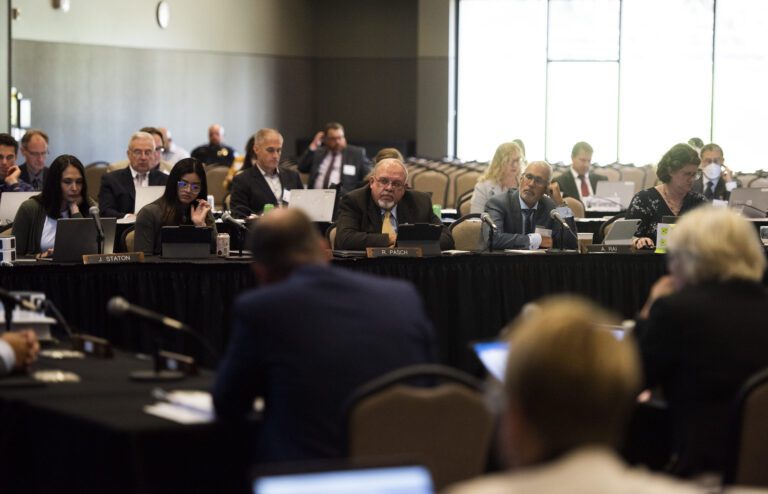The University of Wisconsin system is launching a new tutoring program aimed at Midwest neighbors, hoping the program will bring more students back to Badger State colleges.
On Thursday, the UW Board of Regents approved the creation of the Midwest non-resident tuition rate. It aims to reverse enrollment declines from neighboring states that are pulling out of a regional initiative known as the Midwest Student Exchange Program, or MSEP.
During the 2020-21 academic year, 2,828 students from states like Illinois, Indiana, Missouri and Kansas enrolled at Wisconsin universities through MSEP, which offers tuition discounts for non-residents. That represents a 29 percent decrease from 4,043 MSEP enrollees in 2017, according to system data.
Stay tuned for the latest news
Sign up for WPR's email newsletter.
Wisconsin saw the largest inflow of students of all participating states during the 2020-21 school year and the third-lowest out-migration of 239 students, according to MSEP data.
The regional initiative was created in 1994 and until 2019 10 states participated in the program.
“But what's happened in recent years is partner states have pulled away,” Sean Nelson, the UW System's vice president for finance and administration, said during a Board of Regents meeting Thursday. “A lot of institutions have dropped out and now we're down to about eight participating states.”
For years, Illinois had the largest number of exchange students who left the state. During the 2020-21 school year, 4,938 students enrolled at other Midwestern universities.
UW-Milwaukee Vice President for Finance and Administrative Affairs Robin Van Harpen told the board that the university was notified last year that Illinois was also withdrawing from the MSEP.
“Illinois is the largest source of domestic non-resident students for UWM,” Van Harpen said. “About 1,300 students come to us from Illinois and we were right in the middle of the student recruitment pipeline and all of a sudden there were questions about what the percentage would be for Illinois students.”
Administrators in Milwaukee stepped in, Van Harpen said, and got approval from the regents that year to continue offering tuition discounts to Illinois students on a temporary basis.
When asked by the regents why Illinois might have decided to leave the MSEP, UW-Milwaukee Associate Vice President for Enrollment Management Kay Eilers told the board she assumed it was because there was “an exodus of students from their state.”
The most recent MSEP report shows that Illinois saw no exodus of students from participating states, while nearly 5,000 left for schools across the Midwest.
To keep Illinois students flowing, regents on Thursday approved a new Tuition Rate for Midwestern students attending all UW schools during the 2023-24 school year and beyond.
The price will start at 150 percent of the cost paid by Wisconsin students.
“But after that, we would study it and decide if there's room to generate more revenue on one side,” Van Harpen said. “Or, should we be more competitive with the states around us that are lowering their tuition?”
Keeping the flow of students coming to Wisconsin is important to UW schools. Between 2010 and 2021, total enrollment in the UW System declined by 10 percent. UW-Milwaukee has seen a sharp increase of 21 percent during that time.
The new Midwest tuition initiative does not affect existing tuition agreements through the Midwestern Student Exchange Program or the Wisconsin-Minnesota Tuition Reciprocity Agreement.
Wisconsin Public Radio, © Copyright 2024, Board of Regents of the University of Wisconsin System and Wisconsin Educational Communications Board.

